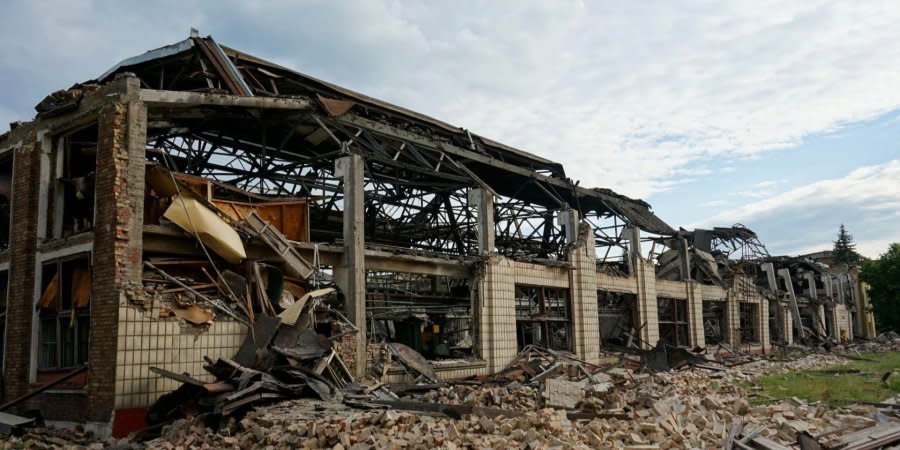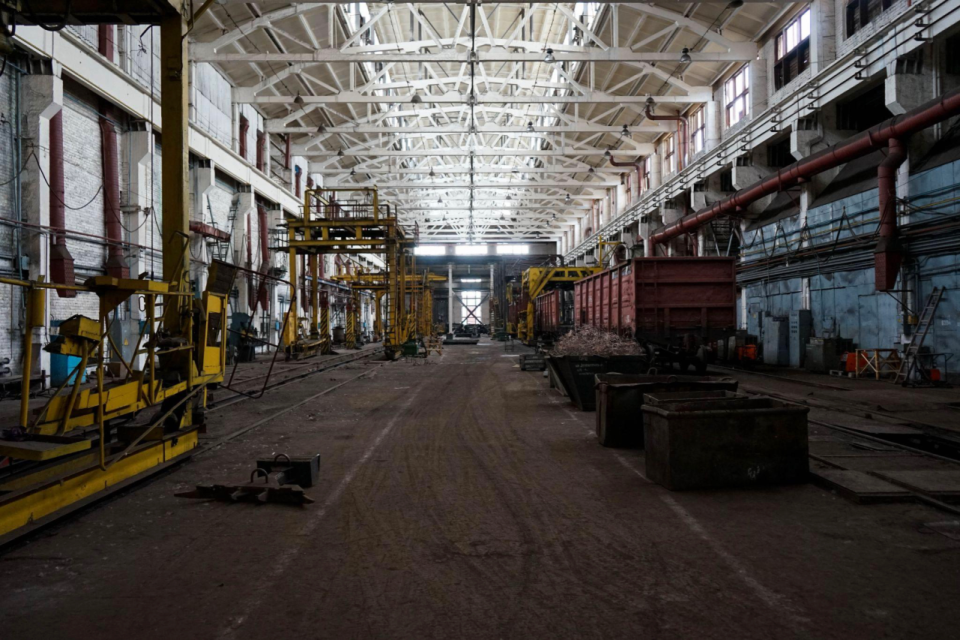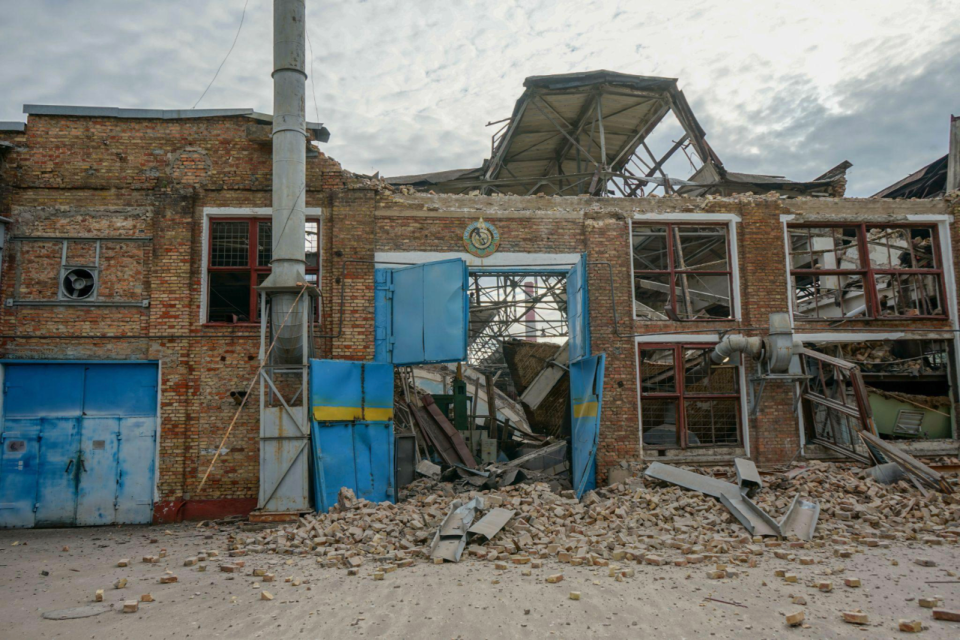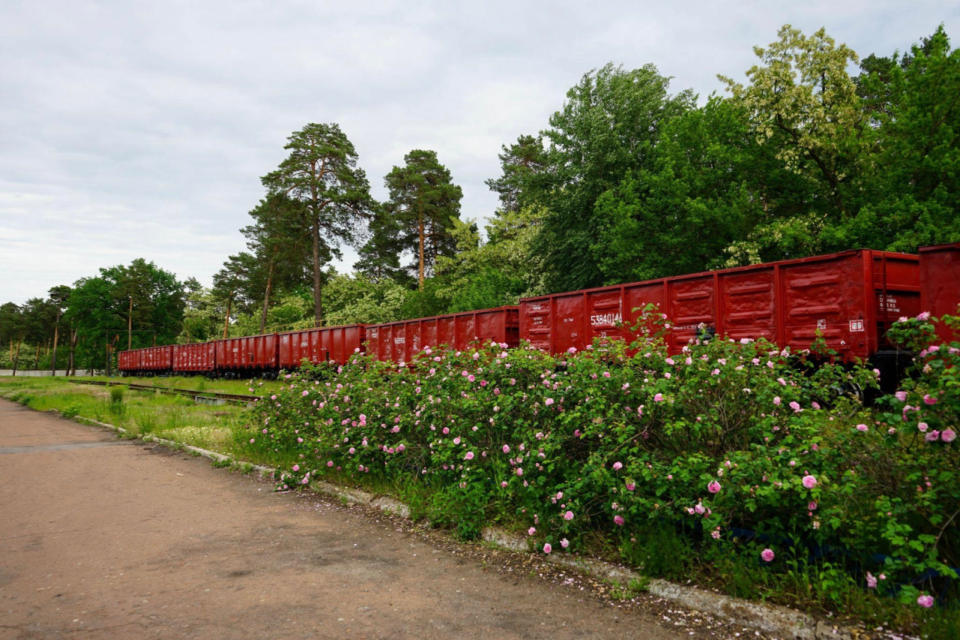Russian missile strike on railcar repair plant was attack on grain export infrastructure

The target was a railcar repair plant, where Ukraine’s state railway company Ukrzaliznystia overhauls freight wagons that are used to transport the country’s huge annual grain harvests.
Commenting on the missile strike in Kyiv later, the Russian defense ministry claimed the plant was a valid military target, and that T-72 tanks donated to Ukraine by its allies had been stored there.
However, Ukrzaliznystia Board Chairman Oleksandr Kamyshin immediately denied this claim, stating, “There are no such tanks at the plant, as well as no military equipment. There are only the railcars that we repair. These carriages we need for export – these are, in particular, grain carriages.”
Journalists given free rein to walk around the entire territory of the site by the company following the missile attack found no trace of any tanks having been stored there – no destroyed tank hulks or even signs of tank tracks on the ground.

Instead, the Russian missile strike indeed appeared to have destroyed or otherwise damaged beyond repair industrial facilities that handled the initial stages of the maintenance and repair of railcars. This included the destruction of grain transport cars, though there were more railcars on-site that had already moved on to later steps and were undamaged.
The incident bolsters Kyiv’s claims that Russia is attempting to further degrade Ukraine’s ability to export its grain to the world: The Kremlin has already placed a chokehold on Ukraine’s main export port of Odesa, mining the waters around it and blockading it with warships.
Ukraine’s lesser ports on the Azov Sea coast, such as Berdyansk and Mariupol, which before Russia’s full-scale invasion together exported about 15% of Ukraine’s grain, are now under Moscow’s control. Ukraine claims, and satellite imagery provides evidence, that Russia is using these ports and the occupied port of Sevastopol in Crimea to export grain stolen by Russia from Ukrainian farms.
The early morning attack in Kyiv came as a shock to many residents, who despite regular air raid alerts, had not experienced a missile strike since April 28. A sense of calm had come to the capital in the preceding month, when the Russian army was defeated in fighting at the gates of Kyiv, and retreated from Kyiv, Chernihiv, and Sumy oblasts in the country’s north.
But the calm in the capital was shattered at about 6.00 a.m. on June 5, when Kyiv city and oblast air defenses opened up against incoming Russian cruise missiles.
One missile was reported shot down over Obukhiv district in Kyiv Oblast, about 40 kilometers to the south of the capital, but shortly after four others slammed into their target in Kyiv, leaving a huge plume of black smoke billowing across the east of the city.
The Ukrainian military later said the missiles were fired from a Tupolev Tu-95 strategic bomber in the area of the Caspian Sea. A Tu-95 can carry up to eight cruise missiles.
Earlier, at 5.30 a.m. at least one of the missiles bound for Kyiv apparently passed dangerously low over the Pivdennoukrainsk nuclear power plant in Mykolaiv Oblast, to the south and east of Kyiv. Ukrainian state nuclear power company Energoatom said the low-altitude flyover had potentially put the plant’s operating reactors in danger, and accused the Kremlin of “nuclear terrorism.”

Luckily, the Russians chose to strike the Ukrzaliznystia repair plant in Kyiv on a Sunday morning, a day when the plant runs on minimal staff. None were killed, and only one was hospitalized.
The infrastructure fared worse, however. Other plants will have to pick up the slack after the destruction of one of Ukraine’s most important railcar maintenance points, located in its busiest railyard.
This is only the most recent in a string of Russian attacks against Ukrainian railroad infrastructure. Russia appears to be attempting to strangle Ukraine’s ability to both store and export grain, perhaps its most important export.
Russia attacked the vital Beskidy railway tunnel in the Lviv Oblast only a few days earlier as a part of a long effort to slow down Ukraine’s ability to transport aid into the country from across the western border, then disseminate it to where it is needed.
And on the very same day as the Kyiv attack, Russia also destroyed a grain terminal in the port city of Mykolaiv. More broadly, the blockade of Odesa port and the resulting inability to use cargo ships is enough to cripple the parts of the sector – the parts of it not already under occupation – by making it reliant on the far less efficient rail transport.
Russia now appears to be trying to make it more difficult for Ukraine to transport grain and other agricultural products by rail through reducing Ukraine’s supply of rolling stock.

That could have far-reaching consequences, as Ukraine exports an estimated 12.8% of the world’s corn and 10.5% of the global supply of wheat – mainly to Africa and the Middle East. Another important Ukrainian export is sunflower oil – the country produces about 40% of the world supply.
/By Anthony Bartaway

